On a recent ride, a friend ended up getting a flat tire. We paused our ride so he could change his tube and pump it up, and then we were off again. Not long after, he got another flat. And after that…another. His frustration was evident when he blurted out, “why does my bike tire keep popping?!”
In this article, we’ll take a look at a few reasons your bike tire might be popping repeatedly. We’ll also give you a few tips on how to stop it from happening again.
Why Your Bike Tire / Tube Keeps Popping Repeatedly
If your bike tire or tube keeps popping repeatedly, you may be using the wrong tires or tire pressure for the terrain, your tires may be old and worn-out, you could have something sharp lodged in your tire or your rims could be damaged and are scratching the tire or tube on the inside.
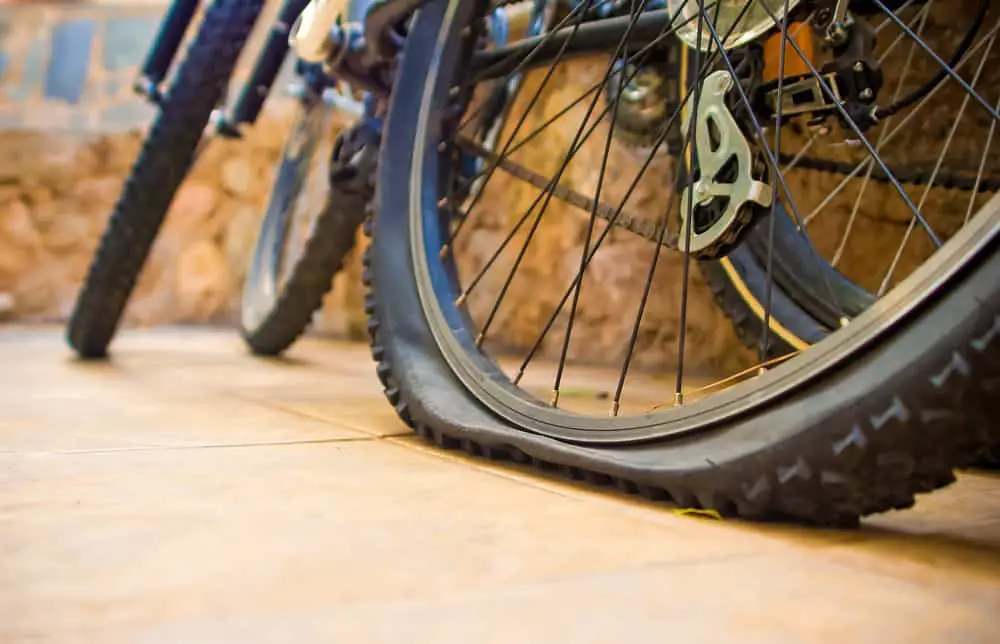
8 Causes of Repeated Bike Tire / Tube Popping
1. You’re Using the Wrong Tires
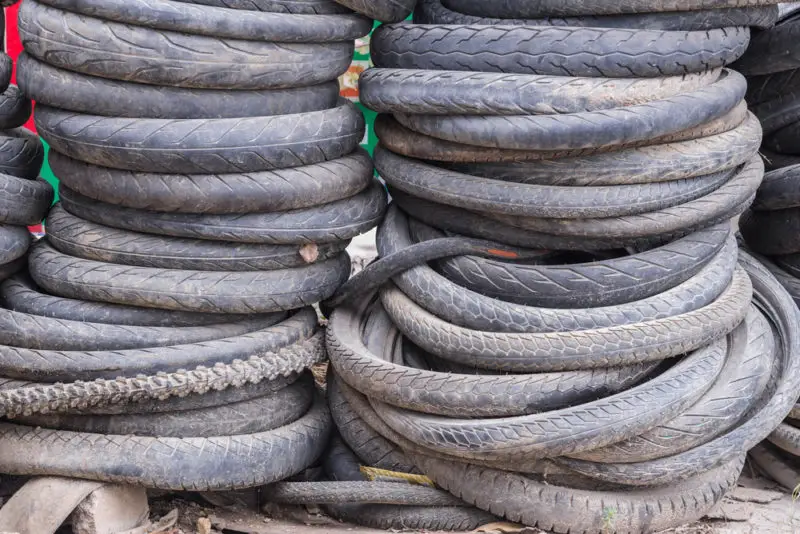
Using the wrong tires for the terrain is a good way to get repeated flats. Tires are designed specifically for different types of terrain: some are thinner and lighter to be more efficient on smooth ground, while others are thick and burly for handling rougher roads or trails.
If you’re riding gravel on a pair of skinny slicks, you’ll be more likely to get a puncture than if you used a good pair of gravel tires.
2. You’re Using the Wrong Tire Pressure
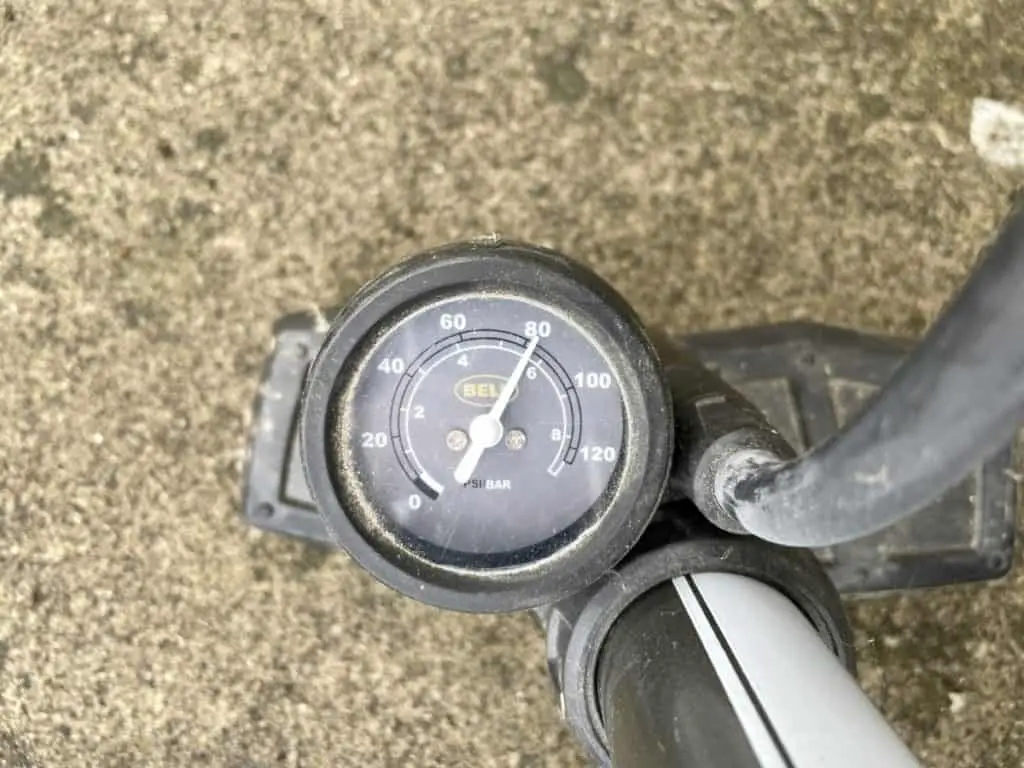
If your tire pressure is too high or too low, it could cause repeated flats.
If your pressure is too low, you run the risk of getting a pinch flat. Pinch flats happen when the tube gets pinched between the rim and the road (two hard surfaces) and then ruptures. A pinch flat usually looks like a snakebite, with two small holes.
On the other hand, if your tire pressure is too high, you could blow the tube out, just like overinflating a balloon. This is even more likely to happen if the tire isn’t evenly installed on the rim, or your bike takes a lot of hard impacts, like riding off curbs and drops, landing jumps or riding over rough terrain.
3. Your Tires Are Old or Worn Out

Old, worn tires are much more likely to get flats. As the rubber wears out, it offers less and less protection from damage. While (in most cases) a tire can still be used after being repaired from a puncture, it can only be repaired so many times before it’s time for a replacement. If you’re getting repeated flat tires, it could just be that you need to replace them with new ones.
4. You Have Something Sharp Stuck Inside Your Tire
If you ran over something sharp, like a nail or piece of glass, it can cut through your tire and pop your tube. If you install a new tube without noticing the sharp object is lodged in your tire, the tube could pop all over again.
5. You Pinched the Tube When Changing Your Flat

If your tire went flat after you just changed the tube, it could be because you damaged the tube when you installed it. For example, if the tube gets pinched as you are installing it, it could put a hole in the tube, causing the air to leak out slowly.
6. Your Tires Aren’t Seated Correctly on the Rim
If you use tubeless tires but they aren’t seated on the rim correctly, they’ll leak. Even if you use tubed tires but don’t seat them correctly, the tube could get pinched between the tires and the rim, causing a flat.
7. There’s Something Wrong with Your Tire Rim
If you hit a pothole and damage your rim, it could cause a sharp or jagged edge that could rip your tube. The rim may not appear to be damaged from the outside, but any sharp edge can easily cause repeated damage to every new tube you install.
8. Your Tubes or Tires are Dry Rotted
If your bike has been sitting around in the garage for a long time, the tubes or tires could dry out and rot, the rubber becoming brittle and unusable. Even if you have tubes or tires in storage that have never been used, they could still suffer from dry rot.
These tires may not hold any air at all, or they may hold air but leak very slowly during your ride, leading to flats after a few hours of riding. Either way, tires that have become brittle as the rubber dries out are more prone to punctures and are not safe for use.
How to Stop Your Bike Tire / Tube from Popping (7 Tips)
1. Check the Inside of the Tire for Sharp Objects
It’s a common mistake when you’re out on a ride. You changed a flat tire, but then you forgot to check for debris inside the tire. If a nail or piece of glass went all the way through the tire, it could still be stuck inside, causing the new tube to pop almost immediately.
When you change a flat tire, inspect the inside of the tire carefully and remove any sharp debris before installing a new tube.
2. Use the Correct Tire Pressure for Your Weight and the Terrain
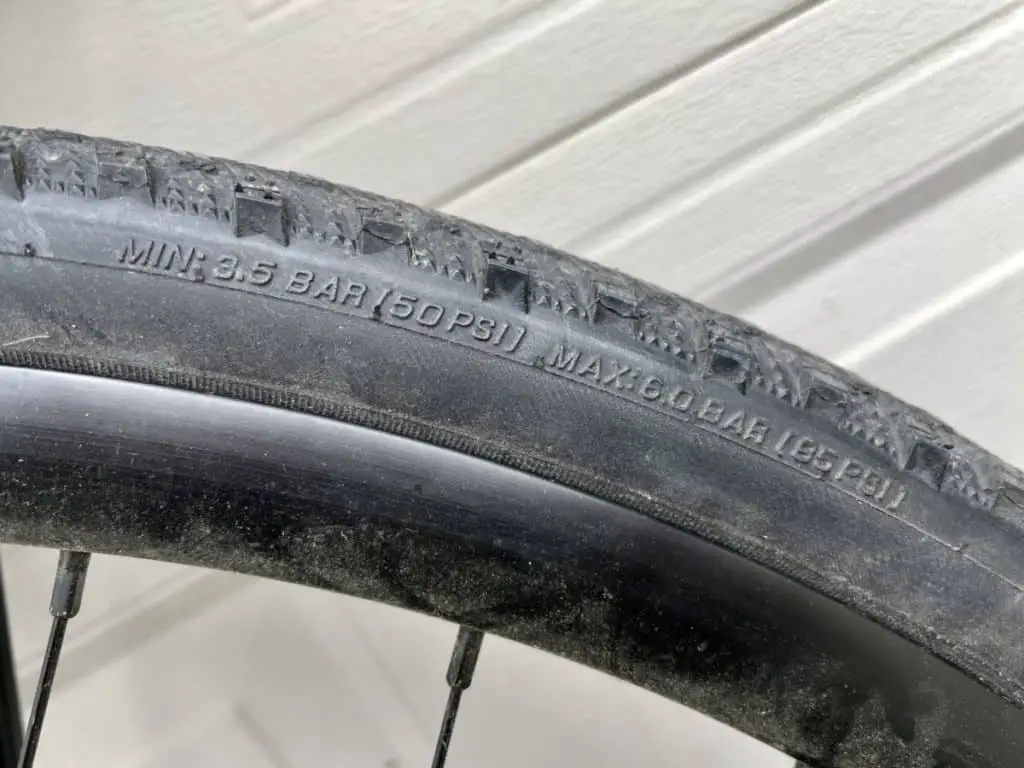
The sidewall of your bike tire will give you a minimum and maximum tire pressure for your specific tires. However, rider weight, tube type, terrain, and weather conditions will all play into how much pressure you should be using. The optimum tire pressure will give you a balance of speed, comfort, and traction. Check out this calculator to help you figure out your ideal tire pressure.
3. Replace Your Tires Every 2000 to 3000 Miles
Replace your tires before they are worn out. You’ll want to get new tires every 2000 to 3000 miles, when the tread shows visible signs of severe wear, or when you’ve made numerous puncture repairs already…whichever comes first!
4. Invest in Good Quality Tires for Your Riding Style and Terrain
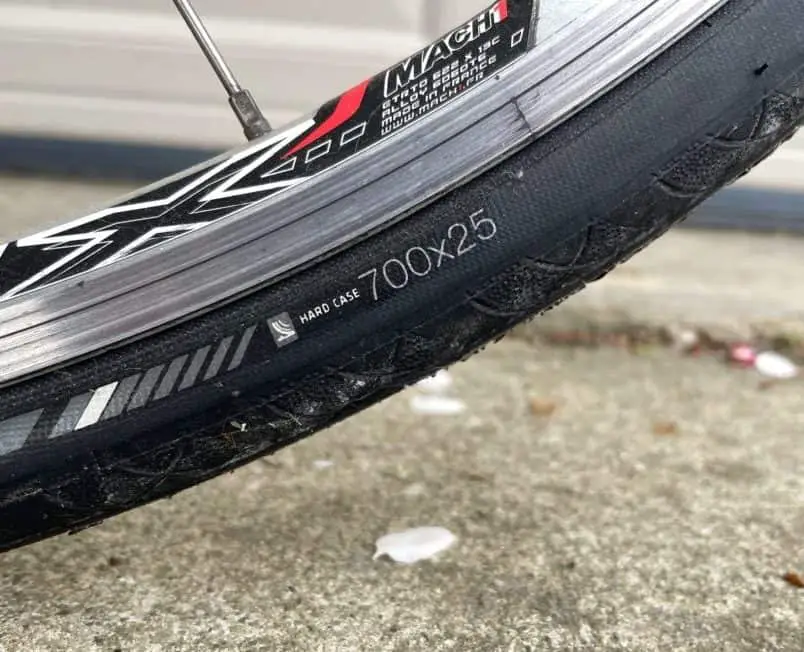
Cheap tires will wear out sooner than good quality tires. So will tires not designed for your riding style or terrain. If you’re a heavier rider or like to ride aggressively on rough terrain, you’ll want to choose a more durable tire with a thicker sidewall. You may sacrifice some speed or weight, but you’ll save money when your tires don’t get as many flats.
So if you find yourself getting repeated flats on new tires, you may need to invest in something that’s a better fit for how and where you ride.
5. Partially Inflate Your Tube When Changing a Flat
When you need to change a flat, you can partially inflate the tube before installing it. This will help reduce the risk of pinching it before it’s installed into the tire. It also makes it a lot easier to get the tube fitted and oriented correctly between the tire and rim.
6. Use Tire Liners
If you live in an area where debris causes frequent punctures, you may want to invest in tire liners. Tire liners fit between the rubber wheel and the tube to prevent anything sharp from reaching the tube.
The downside to tire liners is that they can be heavy and hard to install, but they may solve your flat problem.
7. Go Tubeless
If the way you ride or the places you ride mean you get a lot of flats, you may want to make the switch to tubeless tires. Then, you won’t need to replace any tubes if you get a puncture. Instead, the liquid sealant inside the tire will seal the hole for you. Tubeless tires also let you run lower tire pressure, which will help prevent blowouts from over-pressurized tires.
If your tires and rims are compatible with tubeless technology, their benefits are well worth making the switch.
